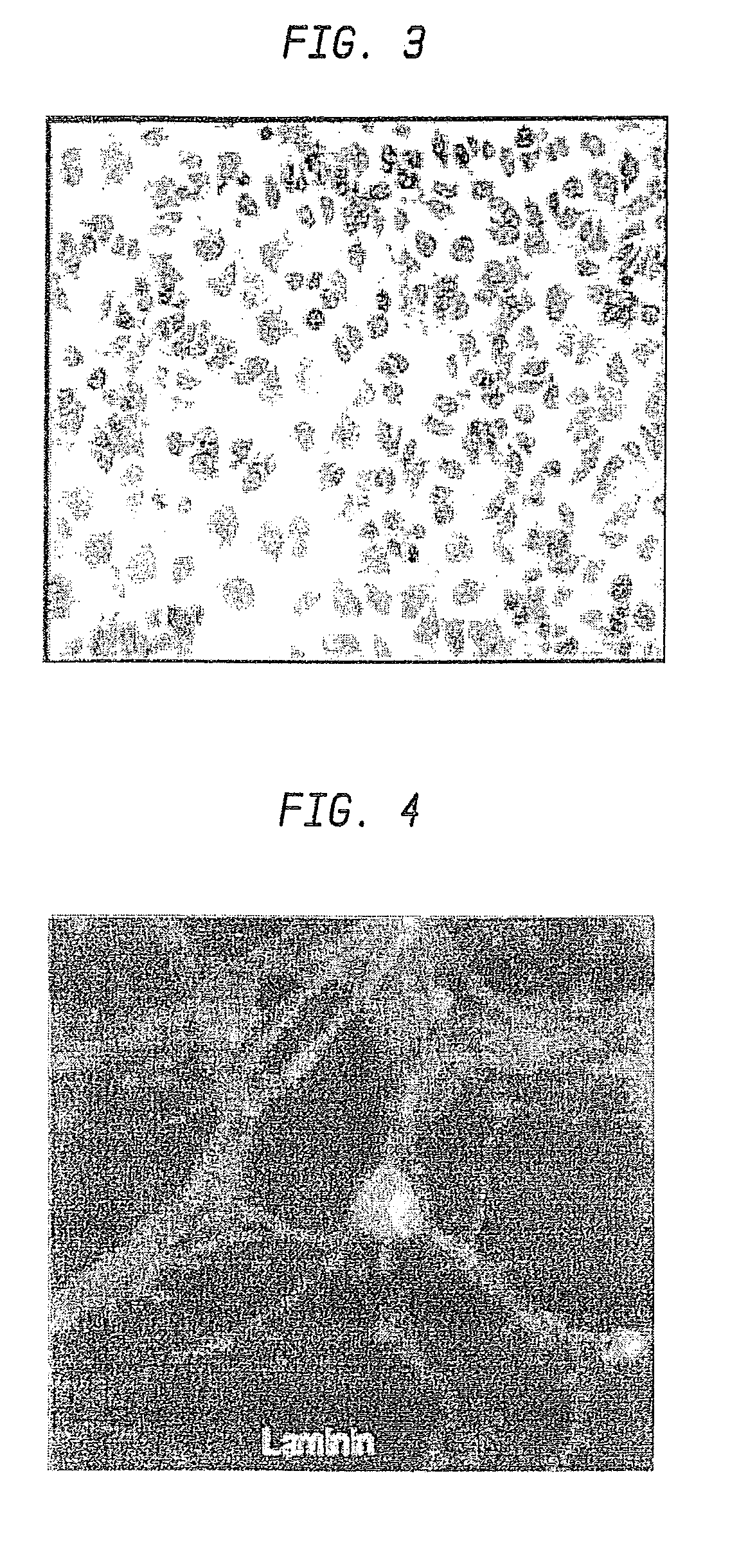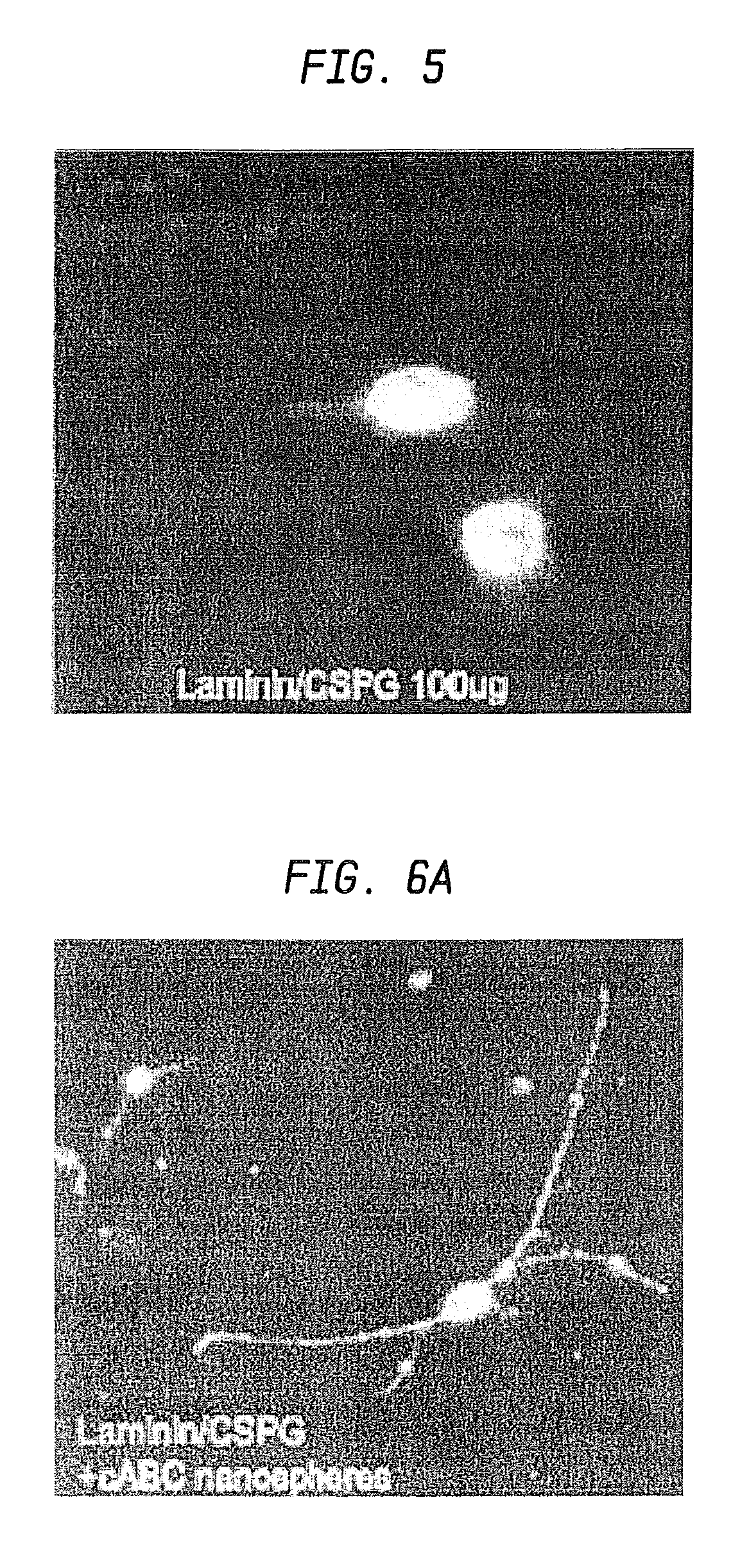Nanosphere/Microsphere Delivery System for the Treatment of Spinal Cord Injury
a delivery system and nanosphere technology, applied in the direction of antibody medical ingredients, peptide/protein ingredients, drug compositions, etc., can solve the problems of inability to repair and regenerate, inability to overcome the complex set of problems of spinal cord injury, and limited repair, so as to promote axon regrowth and some behavioral recovery
- Summary
- Abstract
- Description
- Claims
- Application Information
AI Technical Summary
Benefits of technology
Problems solved by technology
Method used
Image
Examples
example 1
I. Preparation Loaded PLGA Microspheres
[0079]In this example, microspheres were prepared through a water-in-oil-in-water (WOW) emulsion and solvent evaporation / extraction technique described by Xu et al., “Polyphosphoester microspheres for sustained release of biologically active nerve growth factor”, Biomaterials 23:3765-3772, 2002. This method utilizes three phases: (1) an inner water phase enclosing the protein, (2) an intermediary organic phase consisting of a polymer / methylene chloride solution, and (3) an outer water phase containing an emulsifying agent. First, 85 / 15 PLGA was dissolved in methylene chloride at a concentration of 5% (w / v). BSA solution (90 ul of 30%; Sigma) and 900 μl of polymer solution were emulsified by probe sonication (IKA—WERKE, Staufen, Germany) at an output of 3 for 20 s. This emulsion was poured into an aqueous solution of polyvinyl alcohol (PVA; 10%) and vortexed for 3 min. The solution was then added to 20 ml of 0.3% PVA solution with 5% NaCl, and s...
example 2
[0103]In this example, the surface properties of the nanospheres and / or microspheres were modified to specifically target CSPG. Since CSPG is a negatively charged molecule, the nanospheres and / or microspheres were positively charged. The charge attraction targeted the nanospheres and / or microspheres directly to the glial scar and CSPG deposits.
[0104]First, adhesion assays were performed, using tissue culture plastic coated with purified CSPG. Twelve well plates were coated with 1 mg / ml CSPG overnight. The dishes were rinsed with PBS five times to remove any excess CSPG. Just prior to the addition of microspheres, PBS was removed. Microspheres were weighed out and resuspended in PBS to a concentration of 10 mg / ml. A 50 μl aliquot was placed in the center of the dish and allowed to sit for 30 minutes at room temperature. The wells were washed a minimum of five times with PBS. Any microspheres remaining in the well were imaged on a Zeiss Axiophot using a 10× objective. Protein release ...
example 3
[0109]In this study, nanospheres containing cABC in accordance with the present invention were used to effectively reduce scar formation and enhance axonal sprouting after the most common type of spinal cord injury in man, spinal contusion injury (SCI). Nanospheres were prepared from poly(lactic-co-glycolic acid) (PLGA) using an emulsification-diffusion process such as described, for example, in Quintanar-Guerrero et al., “Influence of stabilizing agents and preparative variables on the formation of poly(D,L-latic acid) nanoparticles by an emulsification-diffusion technique”, Int. J. Pharm. 143:133-141 (1996) and Kwon et al., “Preparation of PLGA nanoparticles containing estrogen by emulsification-diffusion method”, Coll. And Surf. A: Physicochem and Eng. Asp. 182:123-130 (2001). The surface charge on the nanospheres was modified by the stabilizer that was used; uncharged nanospheres were made using poly(vinyl alcohol) (PVA) as a stabilizer, while cationic nanospheres were prepared ...
PUM
| Property | Measurement | Unit |
|---|---|---|
| Length | aaaaa | aaaaa |
| Size | aaaaa | aaaaa |
| Size | aaaaa | aaaaa |
Abstract
Description
Claims
Application Information
 Login to View More
Login to View More - R&D
- Intellectual Property
- Life Sciences
- Materials
- Tech Scout
- Unparalleled Data Quality
- Higher Quality Content
- 60% Fewer Hallucinations
Browse by: Latest US Patents, China's latest patents, Technical Efficacy Thesaurus, Application Domain, Technology Topic, Popular Technical Reports.
© 2025 PatSnap. All rights reserved.Legal|Privacy policy|Modern Slavery Act Transparency Statement|Sitemap|About US| Contact US: help@patsnap.com



